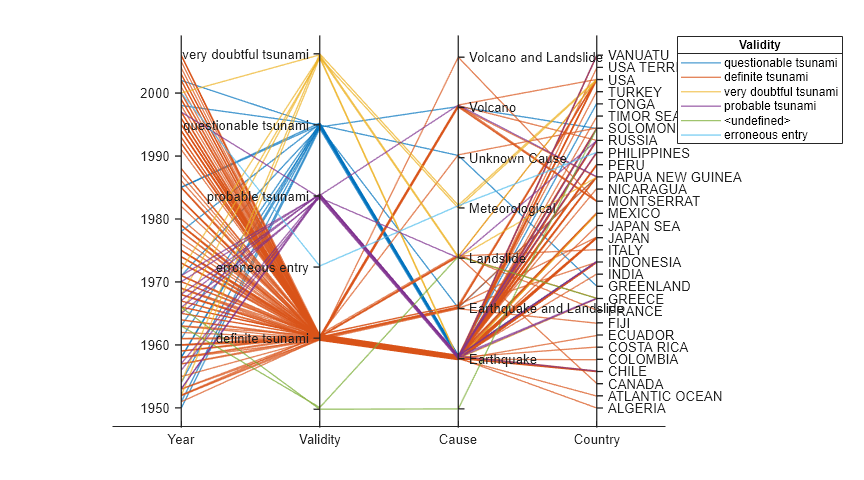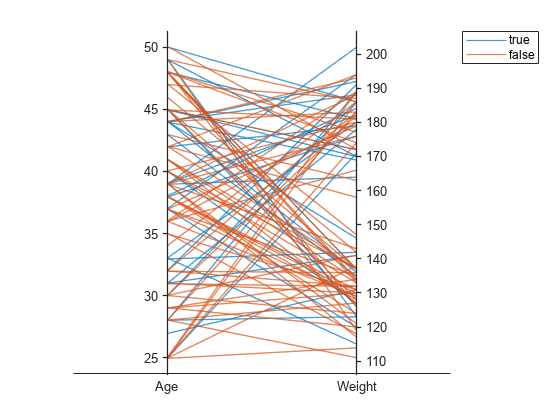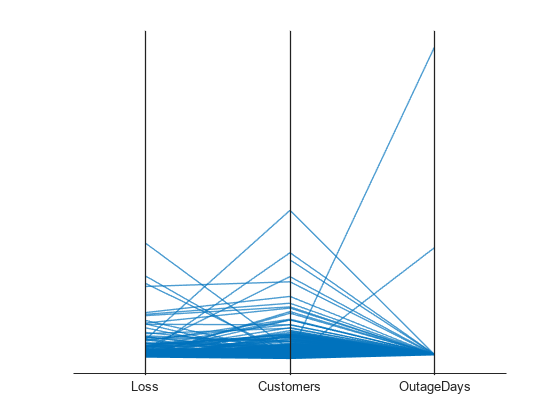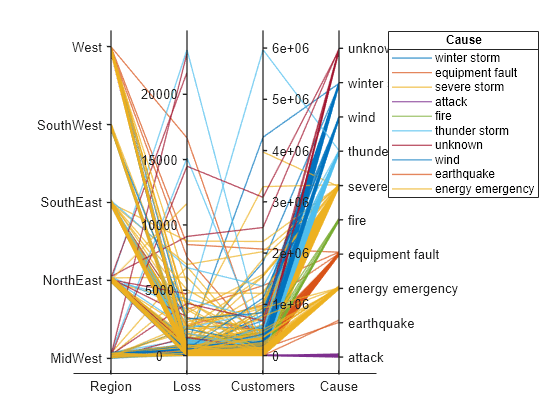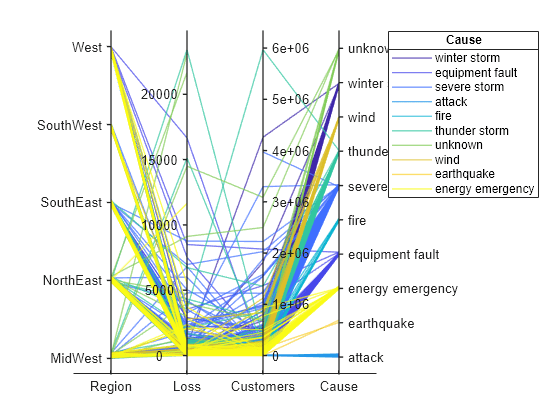parallelplot
创建平行坐标图
语法
说明
parallelplot(___, 使用一个或多个名称-值对组参量指定其他选项。例如,您可以为具有数值的坐标指定数据归一化方法。有关属性列表,请参阅 ParallelCoordinatesPlot 属性。Name,Value)
parallelplot( 在 parent,___)parent 指定的图窗、面板或选项卡中创建平行坐标图。
p = parallelplot(___)ParallelCoordinatesPlot 对象。创建对象后,使用 p 修改该对象。有关属性列表,请参阅 ParallelCoordinatesPlot 属性。
示例
输入参数
名称-值参数
输出参量
详细信息
提示
要以交互方式浏览
ParallelCoordinatesPlot对象中的数据,请使用以下选项(有些选项在实时编辑器中不可用):缩放 - 使用滚轮进行缩放。
平移 - 点击并拖动平行坐标图以进行平移。
数据提示 - 将鼠标悬停在平行坐标图上以显示数据提示。软件突出显示绘图中对应的线条。有关示例,请参阅在绘图中更改数据归一化。
重新排列坐标 - 点击并水平拖动坐标刻度标签,将对应的坐标标尺移至另一位置。有关示例,请参阅 使用平行坐标图探索表数据。
如果基于表创建平行坐标图,则可以自定义其数据提示。平行坐标图上的数据提示始终显示所选点的值,即使您已删除所有行也是如此。
要在数据提示中添加或删除行,请右键点击图上的任意位置,然后指向修改数据提示。然后,选择或取消选择一个变量。
要添加或删除多行,请右键点击图,指向修改数据提示,然后选择更多。然后,通过点击 >> 添加变量,或通过点击 << 删除变量。
版本历史记录
在 R2019a 中推出



